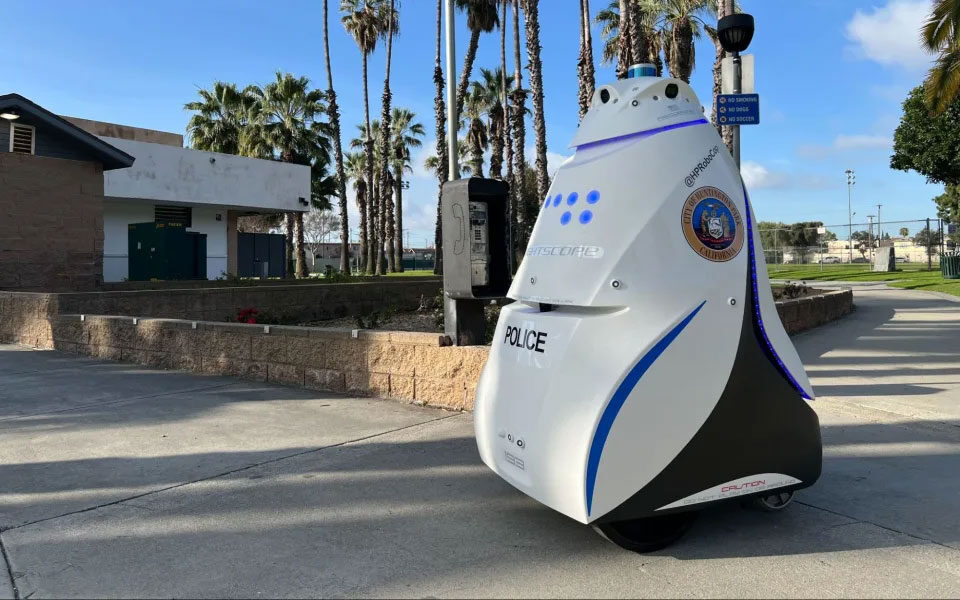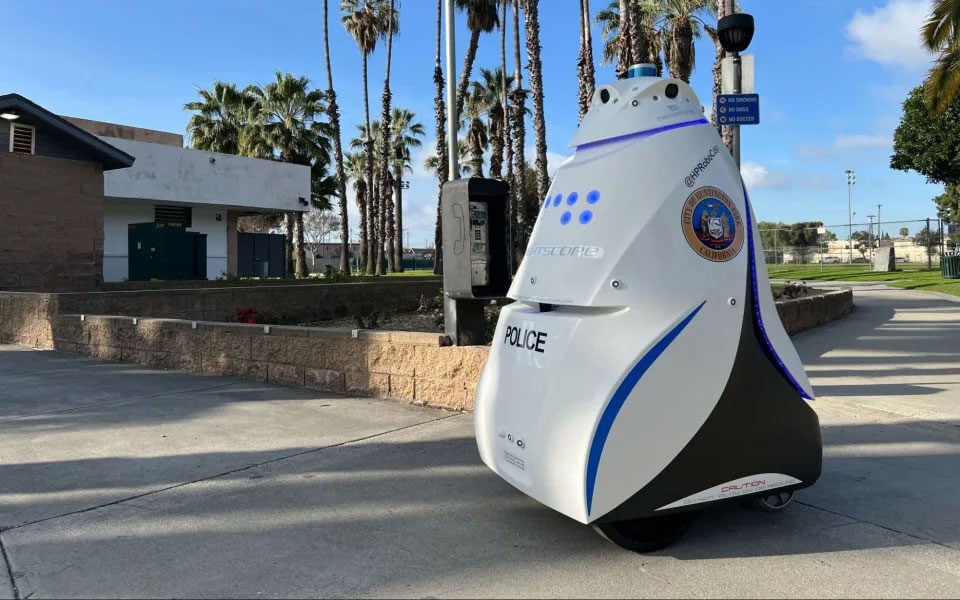
Crime never sleeps — but humans have to. That leaves dangerous gaps in public safety: violent crime occurs every 26 seconds in the US, and property crimes happen even more often. Together, these crimes cost Americans about $2.6 trillion a year—a staggering price we all pay.
Meanwhile traditional security teams—guards and police—are essential but stretched thin. Staffing shortages, high turnover rates, and fatigue make it hard for humans to patrol effectively around the clock. This creates gaps criminals can exploit.
In short: we need smarter solutions to keep our communities safe.
Enter autonomous security robots: tireless, reliable, and always on duty. Far from science fiction, these robots are already patrolling hospitals, shopping centers, and neighborhoods across the country, making people safer and communities stronger.
Here’s how autonomous robots, powered by advanced AI and practical innovation, are reshaping public safety, empowering human teams, and stopping crime before it starts.
Autonomous Security Robots (ASRs) explained

Autonomous Security Robots (ASRs) are like high-tech security guards on wheels, patrolling areas to keep an eye out for trouble. Unlike humans, these robots don't get tired or distracted—they’re on patrol 24/7, even in bad weather.
Knightscope has pioneered this technology with several types of robots:
-
K5 Autonomous Security Robot: Mobile, AI-driven robots that patrol outdoor spaces like parking lots, corporate campuses, and public parks.
-
Stationary Robots: Fixed-position devices placed strategically at entrances, exits, or high-risk locations.
-
Emergency Communication Devices like blue light towers and call boxes (think college campus "blue lights") for quick human assistance in emergencies.
How ASRs work: technology and capabilities

Autonomous robots use a mix of advanced technologies, including:
-
AI-driven video analytics: Detect faces, vehicles, and movements automatically.
-
License plate reading: Instantly identify vehicles involved in suspicious activity.
-
Thermal imaging: Detect hidden threats at night or in poor visibility.
-
Autonomous navigation: Move safely without human operators, even in complex environments.
We call this “Physical AI” — robots that aren’t just smart in theory but patrol real-world spaces without human control. These robots process massive amounts of data instantly, turning it into actionable insights for security teams.
Dispelling common misconceptions
Let’s address some myths we often hear about security robots:
Myth: Robots will replace security guards.
Reality: Robots aren’t replacing people—they’re empowering them. ASRs become “force multipliers,” handling repetitive and boring patrol tasks, freeing human guards to respond only when action is needed. Since there's already a shortage of guards, robots help fill gaps rather than replacing jobs.
Robots can detect suspicious activity and instantly alert human operators. For example, if a robot spots someone listed on a police watchlist, it immediately sends an alert to security staff. Humans then make key decisions and take action. This blend of human judgment and robot reliability makes teams stronger and more efficient.
Myth: Robots invade people’s privacy.
Reality: Robots patrol public spaces (parking lots, campuses) where surveillance is normal. They don’t spy or listen in on private conversations.
Myth: Robots are as capable as those in Hollywood movies.
Reality: Real-life robots are practical, reliable, and effective at their jobs—but they’re not superhuman machines from sci-fi films.
Use cases of Autonomous Security Robots
Autonomous robots are already making communities safer by physically deterring crime. They’re intentionally big, noticeable, and equipped with flashing lights—giving would-be criminals reason to reconsider.
Common situations where robots excel include:
-
Parking Lots & Garages: Prevent vehicle thefts and break-ins by visibly patrolling large areas.
-
Hospitals & Healthcare Facilities: Keep staff, patients, and visitors safe, especially in remote parking lots or late-night shifts.
-
Retail & Casinos: Reduce theft, vandalism, and improve customer safety.
-
Residential & Commercial Real Estate: Maintain safer apartment complexes and business parks without significantly increasing costs.
Wherever deployed, these robots consistently decrease crime, from minor issues like vandalism and graffiti to major incidents like vehicle theft.
Financial considerations and ROI of Autonomous Security Robots
Cost-wise, autonomous robots are surprisingly affordable—about $11 per hour for the K5 for example, when compared to the $35–$85 per hour typically required for human security guards. Plus, robots never require overtime or employee benefits, drastically reducing total security costs.
We use a subscription model called Machine-as-a-Service (MaaS), where organizations pay monthly fees covering everything: setup, ongoing maintenance, software updates, and even hardware replacements.
Other financial benefits include:
-
Lower costs from reduced crime and property damage.
-
Fewer insurance claims, potentially lowering premiums.
-
Decreased staff turnover costs, as robots help prevent burnout among human guards.
Successful deployment: getting robots right
Deploying robots successfully means following a few simple rules:
-
Ask the experts: There are environments where robots work well, and places where they don’t. When you work with Knightscope experts, we’ll provide guidance on where robots will be effective, and where they won’t.
-
Focus on practical locations: Don’t put robots in high-traffic areas just for show. Instead, place them in mundane, repetitive patrol areas that humans struggle to cover effectively.
-
Communicate Clearly: Inform residents, employees, or students ahead of deployment. Do Q&A sessions, host naming contests, or use social media announcements to build trust and avoid public pushback.
Following these steps will help your organizations avoid headaches and still get great results.
Robots are here to stay — so what’s next?
Autonomous security robots aren't just a passing trend—they're quickly becoming essential public safety tools. Expect to see millions of these robots across the U.S. in coming years, integrated into everyday life as naturally as surveillance cameras or smoke detectors.
Knightscope's vision is ambitious but achievable: create the safest possible communities by combining human judgment with robotic reliability. As robots improve and communities embrace them, expect reduced crime, safer spaces, and more efficient public safety nationwide.
The future of public safety is already on patrol.
Autonomous Security Robots aren't futuristic fantasies—they're proven, practical solutions already protecting thousands of people every day. By enhancing human security teams and filling critical gaps, these robots represent a smarter, safer approach to public safety.
Now's the time to consider how your own community, school, hospital, or business can benefit from autonomous robots—and take proactive steps toward safer living and working spaces.
Want to see how robots can improve public safety for your facility? Let’s chat.
 William Santana Li
William Santana Li